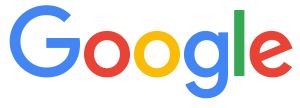Announcing v1_1 of the Google Ads API
Wednesday, March 27, 2019
Today we’re announcing the v1_1 release of the Google Ads API. With this version, you’ll continue pointing to v1 as your endpoint; however, you'll need to update your client libraries in order to use v1_1 features. If you're still on the AdWords API, now is a good time to give the new API a try.
Here are the highlights:
Check out these helpful resources: The updated client libraries and code examples will be published by March 29, 2019. If you have any questions or need help, please contact us via the forum.
Here are the highlights:
- Ads. Create assets for asset-based ads using AssetService.
- Campaigns. Create App Campaigns (equivalent to Universal App Campaigns in AdWords API) by creating a
Campaignand setting theadvertising_channel_typetoMULTI_CHANNELand theadvertising_channel_sub_typetoAPP_CAMPAIGN. - Conversions. Adjust conversions with the new
ConversionAdjustmentUploadService. Upload call conversions with theUploadCallConversionsRequestin theConversionUploadService. - Hotel Ads. Hotel Ads now includes more metrics and segments. See the release notes for details.
- Recommendations. Added
RecommendationtypesMoveUnusedBudgetRecommendationandKeywordMatchTypeRecommendation. - Reporting. Views were expanded to include more metrics and segments. See the Reporting section in the release notes for exact details.
Check out these helpful resources: The updated client libraries and code examples will be published by March 29, 2019. If you have any questions or need help, please contact us via the forum.


